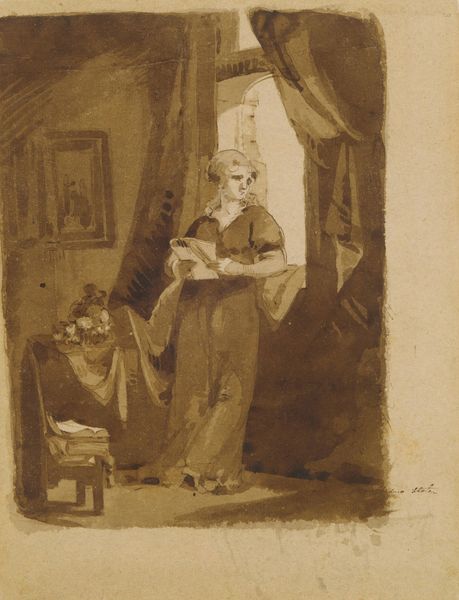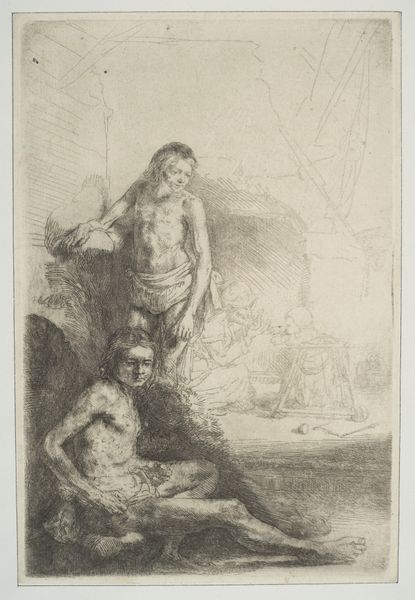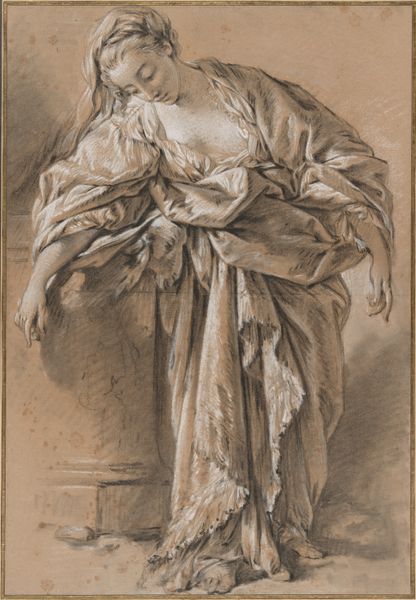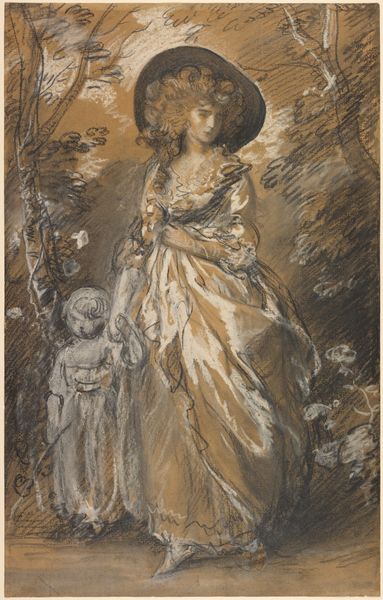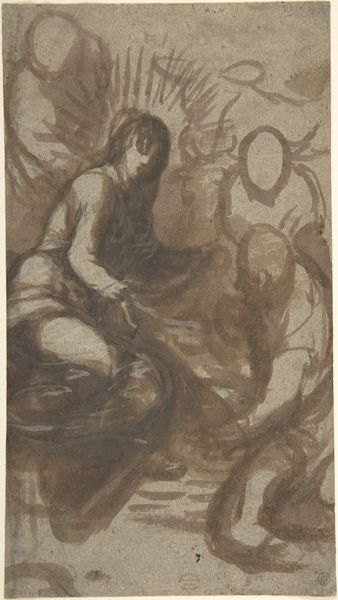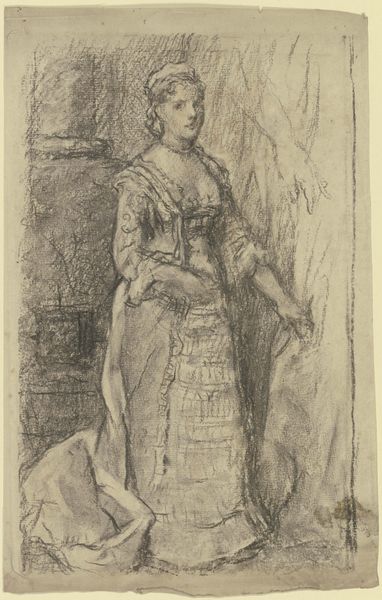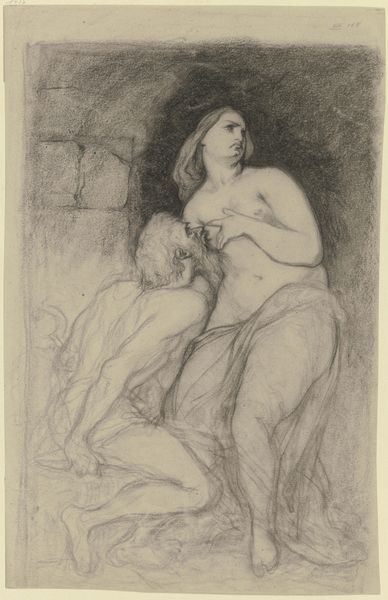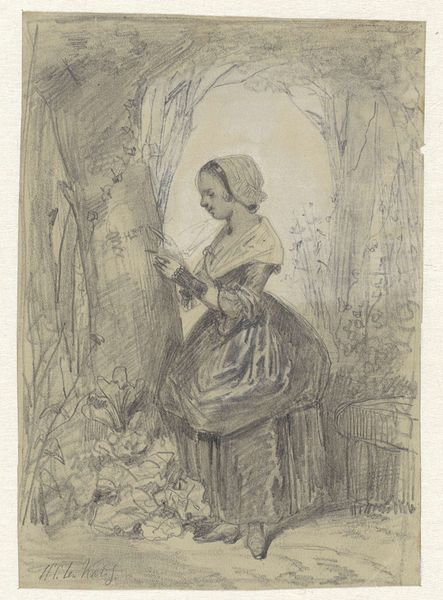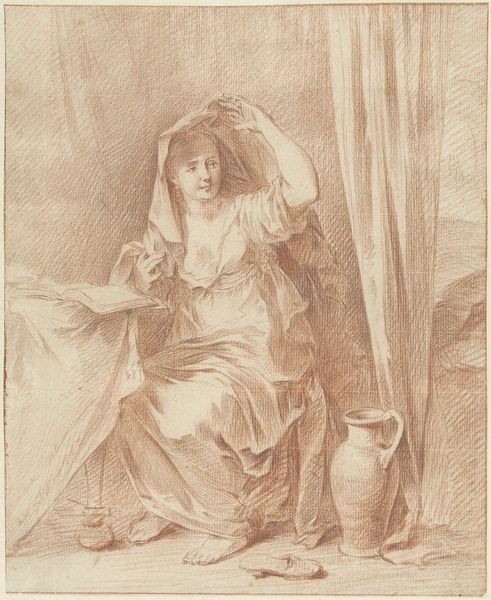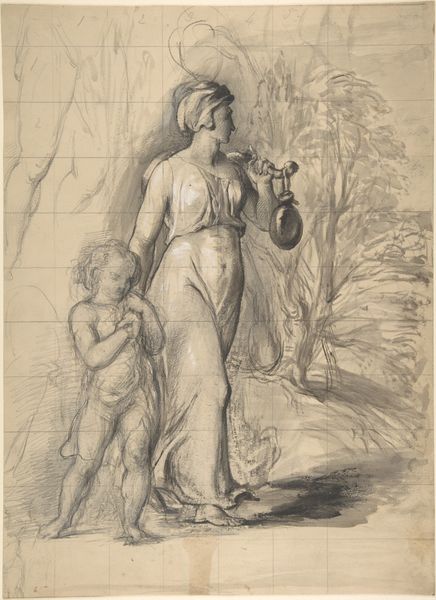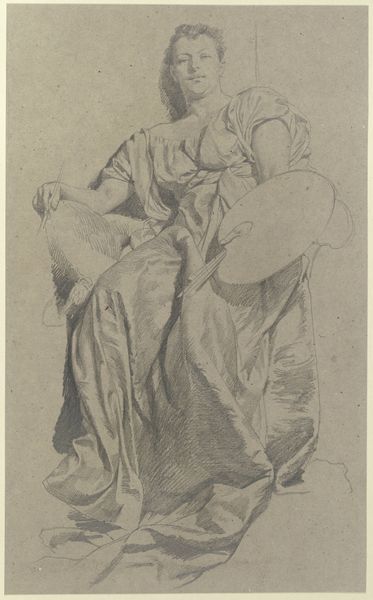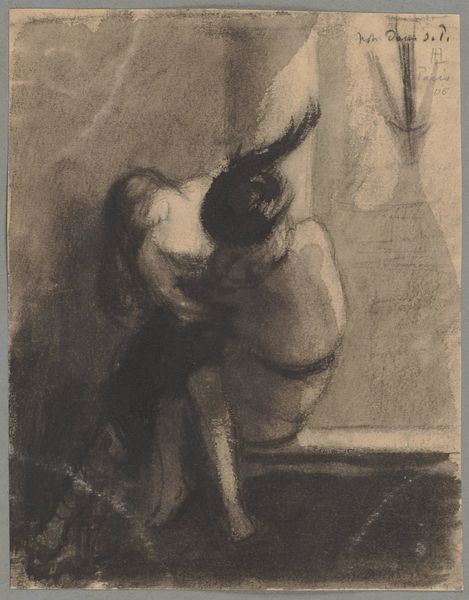
drawing, charcoal
#
drawing
#
charcoal drawing
#
figuration
#
genre-painting
#
charcoal
#
academic-art
Dimensions: 29 7/16 × 20 3/16 in. (74.8 × 51.3 cm)
Copyright: Public Domain
Editor: This is "The Curtain" by Adrien De Witte, created in 1890. It’s a charcoal drawing currently housed at the Minneapolis Institute of Art. I'm really drawn to the dramatic contrast between the light falling on the central figure and the shrouded figures in the background. It’s quite theatrical! What do you see in this piece? Curator: Precisely. De Witte's use of charcoal is quite effective in creating that contrast. Consider the way the light defines the folds of the curtain versus how it models the woman's form. It creates a clear focal point. And consider the relationship of the figure to the composition. What is it, and what is she doing? Editor: She appears to be presenting the group of women in the shadows behind the curtain, almost as though she’s revealing them to us. What I wonder about is the crown of thorns she is wearing... it gives a religious intensity to this everyday scene. Curator: Exactly. Notice the tension in the semiotics. How does the artist engage the curtain as both literal object and symbol, for concealment, maybe revelation? Editor: That’s a really interesting point! It makes me think about how the figures are arranged—almost like a stage setting. Curator: Indeed. By controlling the light and shadow, texture, and dramatic narrative in relation to her gestures, the artist guides our eyes, telling a kind of story. There are lots of art-historical conventions at play. Note how that artistic decision heightens the emotional resonance of the piece, even without overt action or facial expression. Editor: So the essence of the piece lies in how all these visual components interplay to convey a deeper message. Curator: Yes. De Witte invites us to unravel a scene’s implicit narrative through composition and medium alone, thereby drawing a line from historical academic techniques toward Symbolism and even abstraction. Editor: That’s a completely different way of understanding this work, emphasizing the compositional strategy rather than religious allegory. Thanks! Curator: My pleasure! Seeing an artwork through various theoretical lenses can really deepen our understanding of its visual impact.
Comments
minneapolisinstituteofart almost 2 years ago
⋮
A young, long-haired woman stands at the edge of a stage in front of a large, sumptuous curtain. She wears a crown of thorns. She is the Madre Miserocordia, the Mother of Mercy, one of the many titles bestowed on Mary the mother of Jesus by her devotees in the Roman Catholic Church. Her simple attire—long skirt, sleeveless blouse, and sandals—emphasizes her humility. She looks out to an unseen audience, drawing back the curtain as she points to what lies behind. In the shadows we can make out six huddled figures. Two children are in front. Further back we find two women—one young, one middle-aged. Deep within we can make out two more figures, possibly an elderly couple. These are the downtrodden, the poor, the forgotten. The Mother of Mercy reminds us of our duty to remember them and to help them. Adrien de Witte is one of the most respected artists of Liège in Belgium. As a young man he spent five years in Rome, where he resided at the Darchis Foundation, an institution founded in 1699 for the purpose of supporting young men from Liège in their efforts to study art and theology in Rome. Apparently, both aims of the Darchis Foundation bore fruit in de Witte and his work. He made this drawing in 1890, the year of an international financial panic that snowballed from Barings Bank’s bad investments in South America. The hard lot of people like those behind the curtain got harder through no fault of their own.
Join the conversation
Join millions of artists and users on Artera today and experience the ultimate creative platform.
